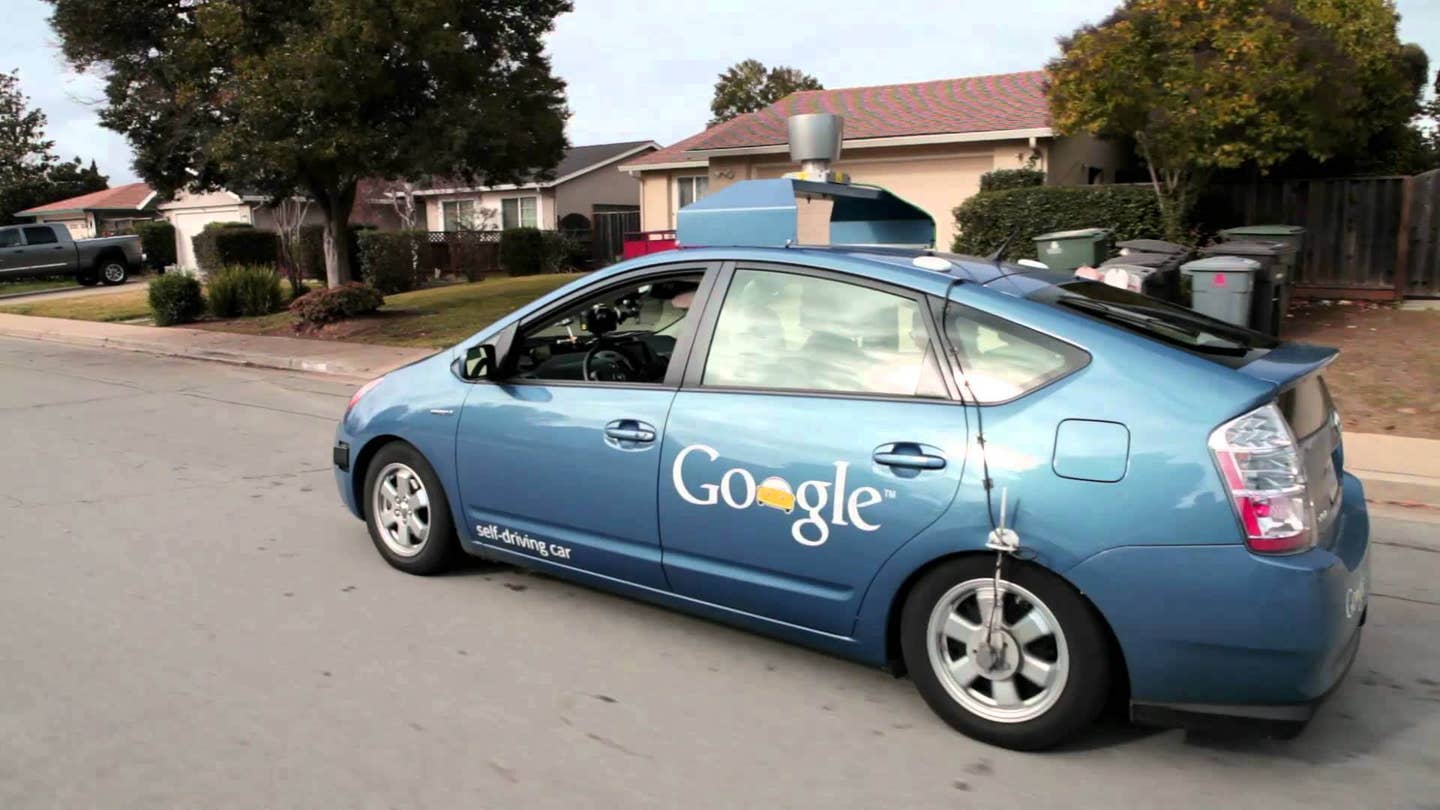First User Of Google’s Self-Driving Car Is Legally Blind

Share
Google has released a video taken in January of the first user of it's self-driving car, Daniel "Steve" Mahan, who is 95 percent blind. The video shows Steve casually sitting in the driver seat of a blue Toyota Prius outfitted with laser range finders, radar, cameras, and inertia sensors as a Google employee in the passenger seat monitors the car via laptop. With a "self-driving car" label on the bumper, the vehicle successfully zooms around town allowing Steve to pick up his dry cleaning and go through the drive-thru of a Taco Bell for lunch. Google posted the video along with news that its tricked out cars have logged 200,000 miles on the road, but makes it clear that this was merely a technical experiment and a way to let Steve experience the possibilities in autonomous driving, which someday may become a reality.
It's just a shame that the reality is so much different: we are so far from self-driving cars on the road as a norm because of cultural attitudes and bureaucratic roadblocks. But that's exactly what Google is trying to change with this video, which is likely not to be the last of this type of marketing for its technology.
It was only a year and a half ago that Google first announced it's driverless car endeavor, which was a logical extension in a way from Google Street View cars. We've been keeping a close watch on this program from its announcement to the legislation passed in Nevada to have all autonomous cars use a red license plate to indicate that the driver is a robot., and even the driverless car accident that was caused by another driver. Now, the car with a bumper labeled "self-driving car" has logged 200,000 miles of road driving and Google is making it clear that this is the future. As China races to develop its own driverless car and other companies try to come up with their own autonomous vehicles, the inevitability of a driverless society seems to be a certainty. The question is, how long it's going to take before its commonplace?
To see the details of how the self-driving car works, check out Google's video presentation from six months ago at IROS 2011"
Clearly pleased at receiving the moniker of "self-driving car user #0000000001", Steve describes how the autonomous car would "give me the independence and the flexibility to go the places I both want to go and need to go when I need to do those things." He has a good understanding of what this technology could do for the visually impaired. He's the CEO/Executive Director of the Santa Clara Valley Blind Center, a community based organization in San Jose, CA that focuses on providing support to those who are facing the challenges of uncorrectable vision loss. Because of his impaired vision, Steve doesn't have a driver's license, so the test drive required a sergeant from the Morgan Hill police department to come along for the ride.
If you want to get a sense of what it would be like to be in one yourself, here's yet another video capturing the experience from the passenger seat:
Be Part of the Future
Sign up to receive top stories about groundbreaking technologies and visionary thinkers from SingularityHub.


In the end, this news from Google is cool and fundamentally a marketing effort aimed at changing perceptions. Most people can reason for themselves that autonomous vehicles would help not only the visually impaired, but anyone with a disability to have mobility that would be life-changing. Yet, we need to see people like Steve for ourselves to be reminded of what's at stake. Perhaps this video can help those who are afraid of driving in a car where they don't have control or being on the road with robots to see beyond their own fears about the coming age of robots and appreciate how this technology can do lots of good for others.
*Update: A new study reports that 37 percent of polled motorists said they definitely or probably would purchase a self-driving system in their next car. My question is, ONLY 37 percent? Really?
[Media: YouTube]
[Sources: FoxNews, Google, Santa Clara Valley Blind Center]
David started writing for Singularity Hub in 2011 and served as editor-in-chief of the site from 2014 to 2017 and SU vice president of faculty, content, and curriculum from 2017 to 2019. His interests cover digital education, publishing, and media, but he'll always be a chemist at heart.
Related Articles

Study: AI Chatbots Choose Friends Just Like Humans Do

AI Companies Are Betting Billions on AI Scaling Laws. Will Their Wager Pay Off?

Are Animals and AI Conscious? Scientists Devise New Theories for How to Test This
What we’re reading
